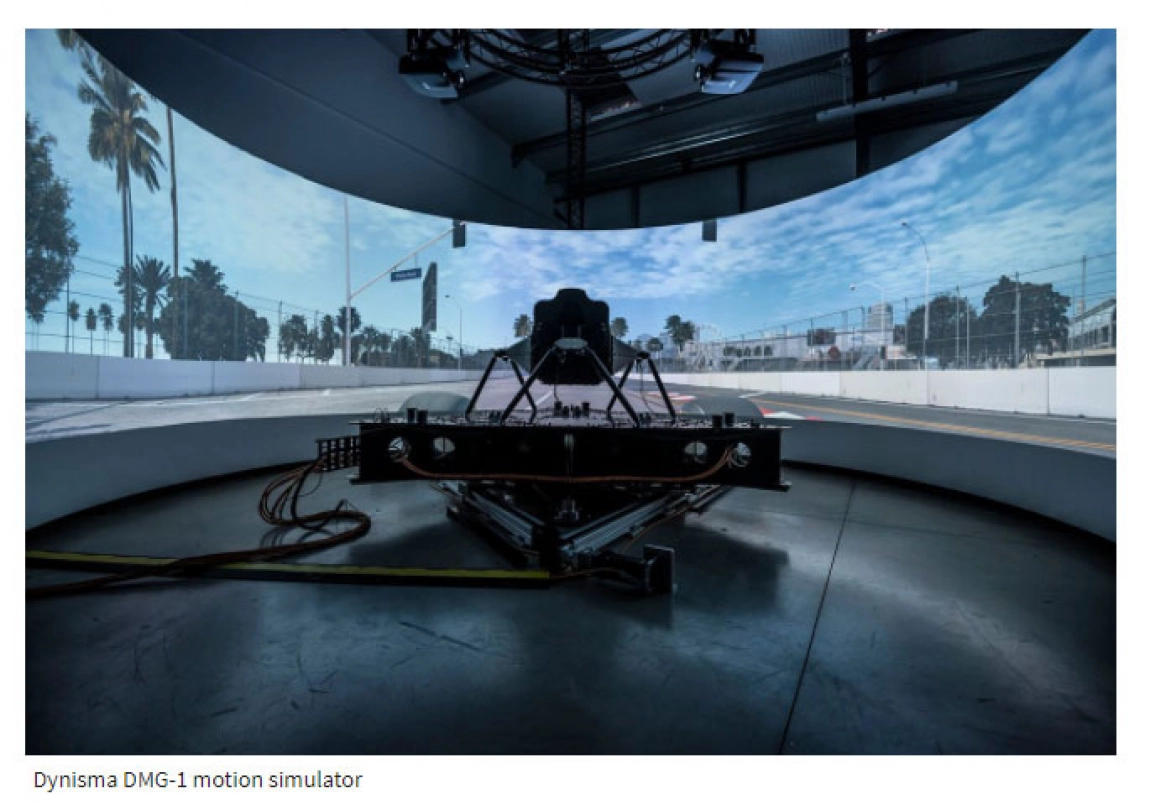
"Driving simulators are otherwise known as driver-in-the-loop simulators," Warne explains.
"You've got the driver providing inputs via steering and pedals to the vehicle model which calculates the physics of the car. The car movements are then fed back to the driver by the Motion Generator, to which they can then respond by correcting their inputs and the loop starts again, up to four thousand times per second.
"If you have any delay at all in the loop then the driver will not drive the car in a realistic manner and your simulator test is invalid. Consider simulating oversteer; if the Motion Generator delays for 20 or 30 milliseconds before telling the driver that the back end is stepping out, then the driver cannot react in time and may spin."
Warne says that his company's simulators, including its first product, DMG-1, produce a latency of between three and five milliseconds, estimating that other products sit somewhere between 20-30ms.
"It's critical that you're able to produce the most accurate simulation possible of what's actually happening," Warne says. "The driver and the car need to work as one whether on the road or in the sim. If you add delay, you end up with an unrealistic scenario."



